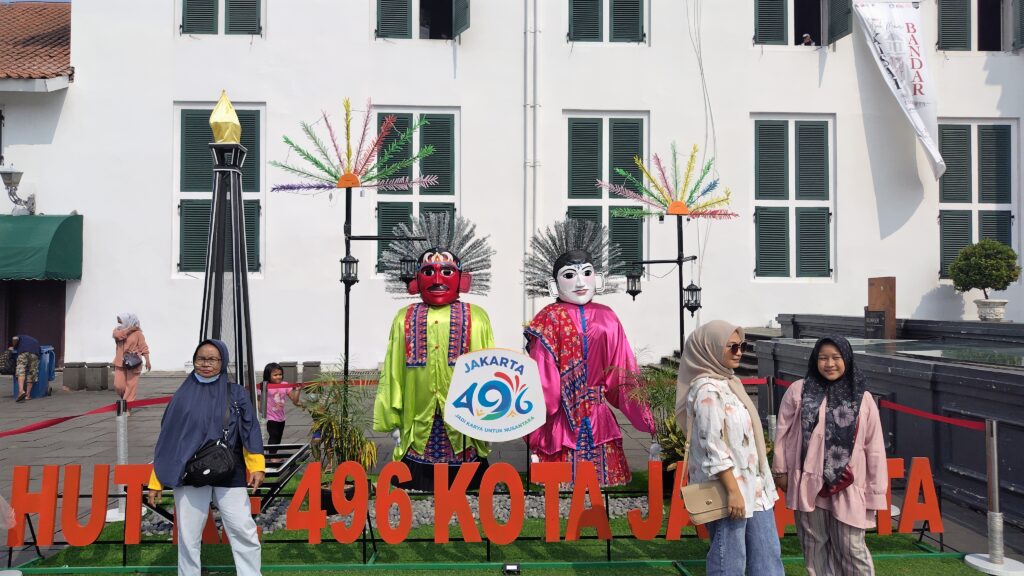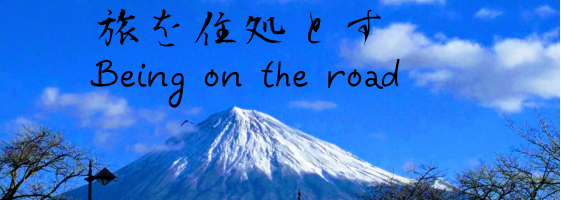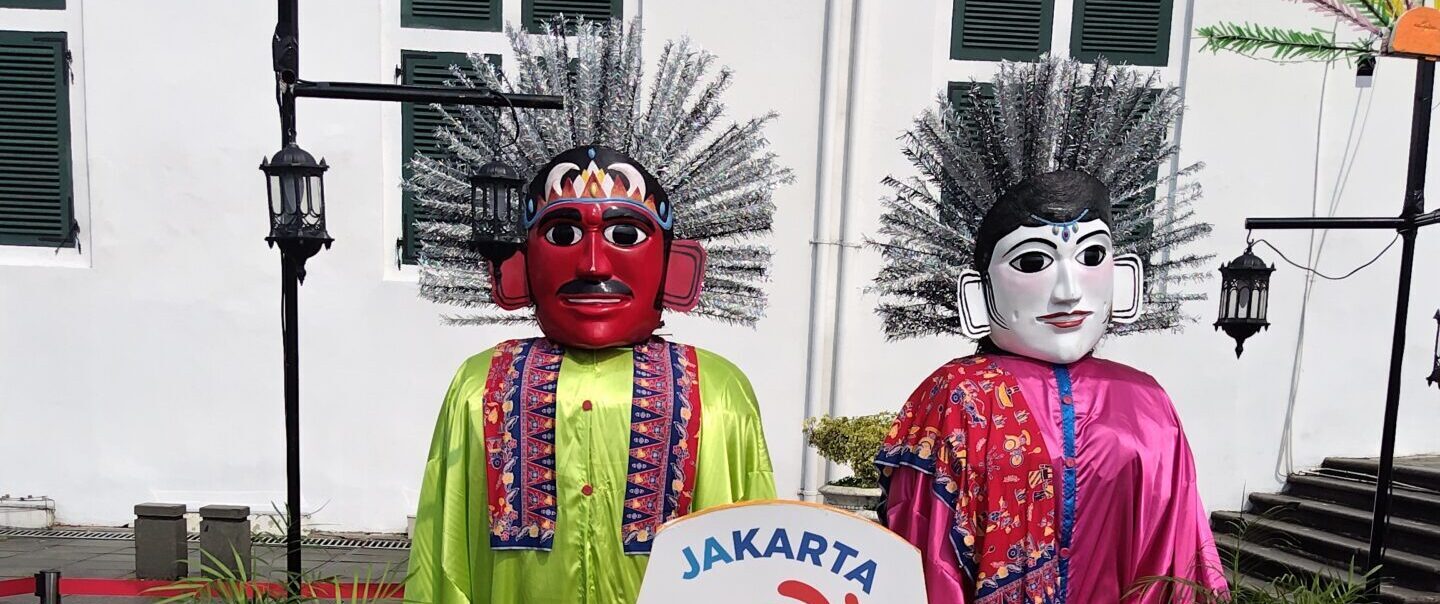In June 2023, on my first visit to Jakarta, Indonesia, while walking around the city, I was suddenly startled by large dolls, over two meters tall, swaying and making sounds. I had no prior knowledge of them and was quite surprised. Was it some kind of festival? They reminded me of Jumbo Max from the old Japanese TV show “The Drifters’ All-Star Show.”
These dolls had human hands reaching out, seemingly asking for money. I thought it might be a celebratory offering for a festival, but there were no other people around. It was a puzzling first encounter. Afterward, I started seeing these red-faced dolls paired up in paintings, as statues in front of stations, and in many other public places throughout Jakarta. It wasn’t until my second visit in July 2024 that I learned their name was Ondel-Ondel.
What is Ondel-Ondel?

Ondel-Ondel are giant dolls often seen in Indonesia, especially in Jakarta. They have distinctive red faces and are symbolic of Betawi culture, the traditional culture of Jakarta. In the past, they primarily served as charms to ward off evil, but nowadays, they are largely seen as tourist attractions.
- Giant Dolls: They are characterized by their enormous size, made with bamboo frames.
- Red Faces: Their prominent red faces carry the meaning of warding off evil.
- Traditional Costumes: They wear flashy costumes adorned with traditional patterns.
- Dancing to Music: Multiple people operate the dolls, making them dance to traditional music.
The Role of Ondel-Ondel
- Exorcism: Originally, they were created as charms to ward off epidemics and evil spirits.
- Celebrations: They appear at celebratory events such as weddings and opening ceremonies, creating a lively atmosphere.
- Tourist Attraction: As a representative tourist attraction of Jakarta, they are popular with many visitors.
Betawi Folk Art and Ondel-Ondel
Betawi folk art is a collective term for the traditional performing arts of the Betawi people, who live in Jakarta and its surrounding areas in Indonesia. Among these, Ondel-Ondel can be said to be a representative symbol of Betawi folk art.
Betawi Folk Art
- Symbol of Betawi Culture: Ondel-Ondel are an indispensable part of traditional Betawi festivals and events, symbolizing Betawi culture.
- Symbol of Multicultural Fusion: The Betawi people are a mixed ethnic group, a blend of various cultures. Ondel-Ondel can be said to have emerged as a result of this fusion of diverse cultures.
- Role as an Amulet: While the Betawi people are strongly influenced by Islam, they also retain traditional animistic beliefs. Within this mix of diverse beliefs, Ondel-Ondel has played an important role as an amulet.
The Question: Is Ondel-Ondel Contrary to Islam?
Here lies a question. Indonesia is the world’s largest Muslim-majority country, with nearly 90% of its population being Muslim. Doesn’t this contradict the monotheistic teachings of Islam, which forbid idolatry? Ondel-Ondel are not merely folk entertainment; they can be seen in numerous public places, including paintings in stations and on buses. I investigated this and found the following:
The Conclusion: Generally, Ondel-Ondel is Not Considered Contradictory to Islam
Here are a few reasons:
- Diverse Interpretations: Islam has various interpretations depending on the region and sect. Indonesian Islam is no exception, with diverse perspectives ranging from strict to tolerant interpretations.
- Respect for Traditional Culture: Many Indonesian Muslims tend to respect traditional culture. Ondel-Ondel is often accepted as part of Indonesian traditional culture.
- Aspect as an Amulet: Ondel-Ondel originally had the role of warding off evil spirits. This is not inconsistent with the Islamic teaching of “faith in God.”
- Use in Celebrations: Ondel-Ondel may appear at celebratory events such as weddings and opening ceremonies. This is consistent with celebratory rituals in Islam.
Points to Note
- Differences by Region and Sect: Ondel-Ondel is not accepted in all regions and sects of Indonesia. Some strict sects may view it negatively as a form of idolatry.
- Individual Interpretation: Ultimately, the appreciation of Ondel-Ondel varies depending on individual interpretation.
Also a Social Issue
As I observed, one of the Ondel-Ondel I saw seemed to be begging for money. This aspect of begging, beyond mere entertainment, was seen as undermining the original Betawi folk art. As a result, street begging was prohibited by local regulations in 2007, and this prohibition also applies to Ondel-Ondel engaged in begging. However, Ondel-Ondel as a character seems to be deeply rooted in the Jakarta region of Indonesia, so I believe it will continue to be cherished.



